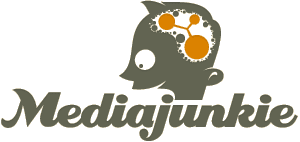As you may know, I am writing a book with Erin Malone called Designing Social Interfaces for O’Reilly Media.
Erin is the the founder of the Yahoo! Design Pattern Library and hired me to be its third curator. Today she is a partner at Tangible UX, a consulting firm, and I maintain the library as a YDN design evangelist on Micah Laaker‘s Yahoo! Open Strategy (YOS) team, in collaboration with Luke Wroblewski‘s Front Doors and Network Services (FDNS) team.
The top of my agenda in the past year has been to identify, gather, and document a family of social design patterns: observed practices that work well in resolving common design problems in social applications. I’ve been looking for and teasing out patterns that enable social environments to thrive and sustain themselves.
Fortunately, I had a leg up or two. While there were very few documented community or social media patterns in the library, there are a wealth of specs, papers, patterns, presentations, and guidelines scattered around the intranet, and there was Matt Leacock‘s first take on a social media toolkit, shepherded together on an internal Yahoo! wiki.
More importantly, I looked out across the landscape of the web and drew on my own personal experience as a user, analyst and addict of online social experiences.
At BarCamp Block last year I facilitated a session on social media patterns (at least that’s what I was calling them then) and the net takeaway was an amazing mindmap of potential patterns. Quite a few of them turn out to be social moments, social behaviors, or social objects; or scenarios that illuminate patterns without being patterns themselves. But the outline and cloud diagrams we built from that brainstorm helped get me started sorting out some possible organizing structures beyond what we had internally a Yahoo.
This mindmap went through a series of iterations and refinements. Meanwhile, I started presenting on the topic of social patterns at BayCHI, at South By, at the IA Summit, at Ignite and more recently at TechPulse and soon PLoP and Interaction09.
Taking your half-baked ideas on the road and presenting them to a demanding crowd of payng customers is a great way of figuring out which ideas have resonance and which miss the mark. Presenting ongoing work in progress is tough: you make yourself vulnerable and open to criticism. But the criticism will come eventually anyway. Why not hear it now while you can still address it and incorporate the best ideas of others into your work?
For that matter, I feel it’s essential to be clear about one thing: almost none of this work on social design patterns is original. Yes, of course I am naming patterns and writing them and perhaps throwing in a nugget of experience here and there, but for the most part I am still *curating* these patterns. I’ve been stealing from everybody!
We hates plagiarism so we cite sources and point back to originators where applicable. I’ve proposed that the nascent PLPL (Pattern Language Markup Language) standard include an attribution element, with a common structure for reflecting sources, reuse, derived work, and licensing matters.
Furthermore, in our book we are inviting a wide range of leading practitioners, thinkers, and bloggers to contribute essays on one or more of the pattern families we’re developing for the book. Because, yes, the book is in many ways an offshoot of this ongoing social pattern collecting effort. And in that same spirit we’re both interested (Erin and me) in experimenting iwth methods of opening up the writing process and seeking feedback, correction, criticism, and contributions before the book’s ship date.
We’ll probably post patterns in progress on a wiki and in the meantime we will both be posting thoughts about the chapters we’re working on on our blogs. I’ll also post some draft patterns here at least until we have the wiki process figured out.
My next post in this series will be about a set of fundamental social design patterns I’m pulling together in Chapter 2.

Comments
5 responses to “About this new book I'm (co-)writing”
As I posted to Erin, I think the Wiki avenue for developing a publications (especially one about social mediia) is really exciting.
I’m no expert, so I’m hardly ready to jump into the wiki.
But I look forward to seeing you two getting heavily into the launch of that wiki process. [went to trouble to sign in, just in case!]
Go for it!
Xian this sounds very cool.
Plus i’d never heard of that markup language, and was only vaguely aware that multiple ML’s exist and can be invented.
Can I propose the Language Language Markup Language (LLML)?
HTML emerged as a sort of simplified language inspired by SGML (standard generalized markup language), or at least by the sorts of dialects that could be defined with SGML. i’m not sure but HTML may actually have been defined at first in terms of SGML.
SGML gave way to XML (eXtensible Markup Language), and in fact XHTML is an attempt to make HTML compliant with (more strict) XML.
Like SGML, XML is intended as a sort of meta-framework in which people can agree upon dialects for sharing structured data about almost anything, so there are tons of XML based languages out there, such as RSS and many others.
It’s not quite your LLML, but I have been engaged with some other people in defining something called PLML (pronounced pell-mell), which stands for Pattern Language Markup Language.
I was going mostly for the “repeat a word until it becomes hilarious babble” Markup Language effect :)
Hi Christian just emailed you as well, here’s a link to one of the presentations I’ve done, http://cathyma.com/2008/05/barcamp-northeast/ but I’ll need to tidy it up!
;)
Good luck!